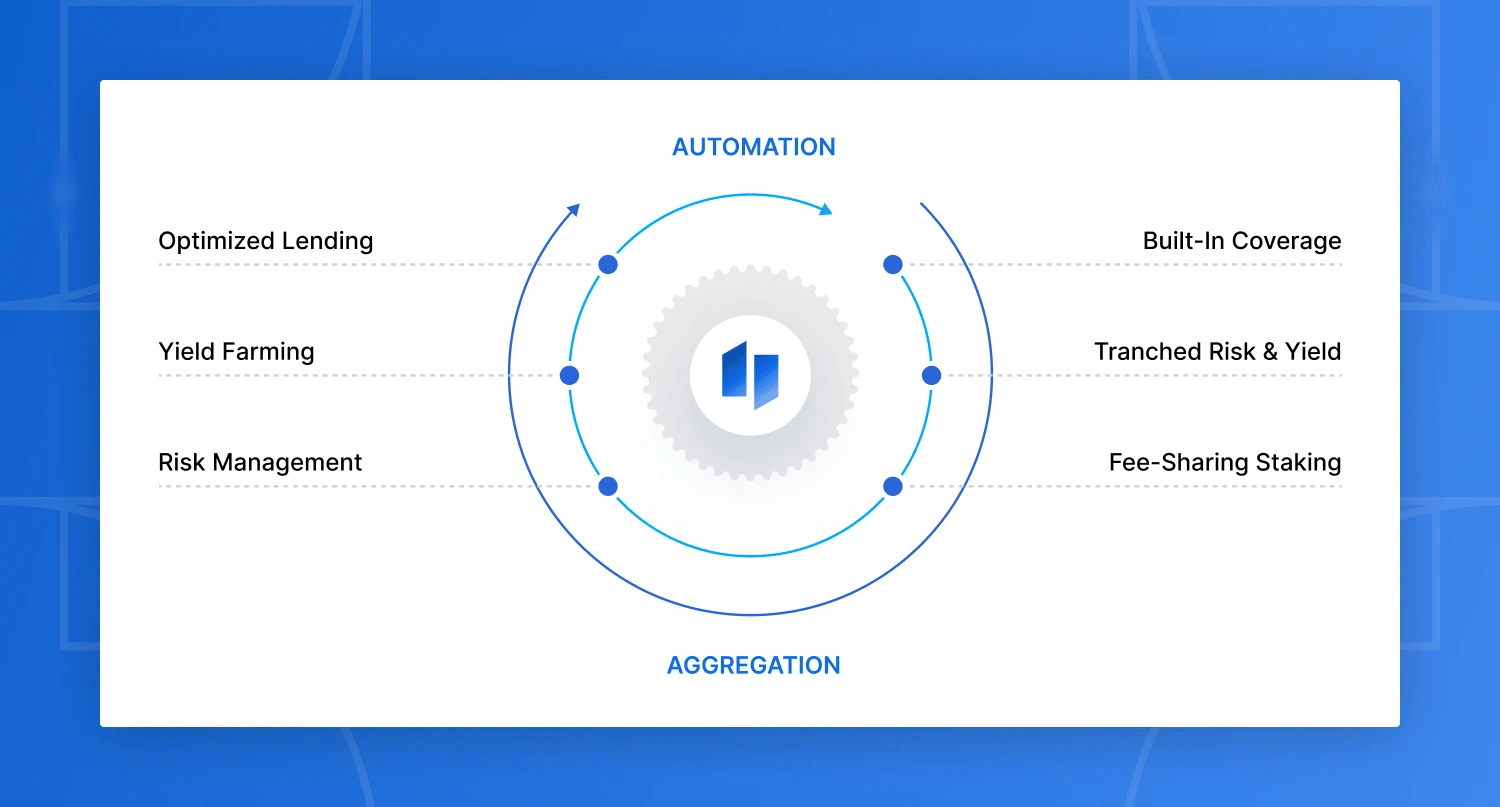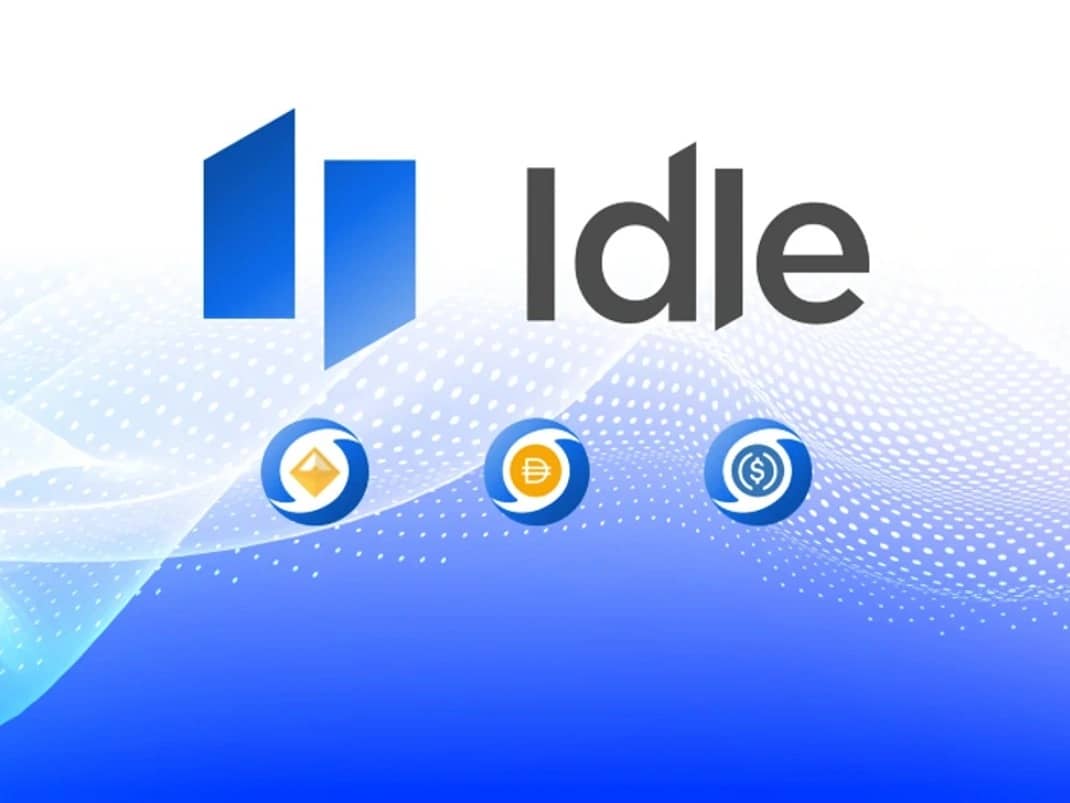위키 구독하기
Share wiki
Bookmark
Idle
Idle
Idle(아이들)은 자동 자산 배분 및 집계를 이자 발생 토큰 경제에 제공하는 데 전념하는 암호화폐 및 탈중앙화 프로토콜입니다. 이 프로토콜은 스테이블코인을 토큰화된 바스켓으로 묶어 다양한 관리 논리에 따라 자동으로 재조정되도록 프로그래밍합니다.[1][2]
개요
Idle 플랫폼의 첫 번째 베타 버전은 2019년 8월에 출시되었습니다. 설립 이후 Idle은 두 가지 다른 배분 전략을 사용했습니다.
- 최고 수익: 이 전략은 여러 머니 마켓을 결합하여 이자 발생 토큰 및 DeFi 프로토콜에서 최고의 기존 상품을 능가하는 최고 이자율을 자동으로 제공합니다.
- 위험 조정: 이 전략은 위험 점수와 수익 간의 최적 믹스를 찾기 위해 자산 배분을 자동으로 변경합니다. [3]
2020년 2월, 팀은 Idle Finance v2 플랫폼과 새로운 계약 아키텍처의 공식 출시를 발표했습니다. 개발자는 모든 대출 시장에서 사용 가능한 최고 수익률을 나타내는 집계 이자율의 이점을 얻기 위해 다양한 대출 프로토콜에 Idle 자금을 배분하는 Dynamic Funds Allocation (DFA) 메커니즘을 포함했습니다. [4][5]
2020년 5월, 개발자는 Idle 3.0 버전을 출시했습니다. UI/UX를 개선하고, 재조정 메커니즘을 업그레이드하고, Idle 생태계에 DeFi 프로토콜 및 토큰을 추가했습니다. 재조정 계산에는 풀 내의 총 자산 평가, 기본 프로토콜 속도 함수 및 공급 및 수요 수준 통합, 나쁜 점수/속도 믹스가 있는 프로토콜 스키밍, 재조정 후 최고의 위험-수익 점수를 달성하는 배분 결정이 포함됩니다. 이는 무허가 대출 풀의 위험을 정량화하기 위한 프레임워크인 DeFiScore와 공동으로 개발되었습니다. [6]

2020년 12월 현재 Idle은 Compound, Aave, dYdX, Fulcrum 및 DSR에 연결되며 Dai, USDC 및 USDT를 지원합니다.
IDLE 토큰
IDLE은 토큰 소유자가 제안한 제안을 제안하고 투표하거나 다른 주소에 투표 권한을 위임할 수 있는 ERC-20 토큰입니다. IDLE을 소유하거나 위임을 받으면 누구든지 Idle 거버넌스에 참여할 수 있습니다. [8]
IDLE 배분
토큰 생성 이벤트 후 13,000,000 IDLE이 배포되며 향후 3년 동안 사용할 수 있게 됩니다. 배분은 다음과 같습니다.
- 2년 배포를 통한 공개 보상(총 토큰 공급량의 60%): LP 펀드(41%), 초기 LP 펀드(4%), 생태계 펀드(15%).
- 2~3년 배포를 통한 팀 및 투자자(총 토큰 공급량의 40%): 현재 및 미래 팀(22.7%), 투자자(17.3%). [9]
LP 펀드
Idle(Dai, USDC, USDT, TUSD, sUSD, WBTC)의 풀 중 하나에 참여하는 유동성 제공자는 상환 또는 잠금이 적용되지 않는 IDLE 토큰을 받게 됩니다. 이 배분은 출시 이후 이미 하드코딩된 2가지 주요 하위 프로그램을 통해 배포됩니다.
- 유동성 부트스트랩 프로그램(390,000 IDLE): 출시 후 활성화되며 30일 동안만 지속됩니다. 블록당 약 2 IDLE을 배포합니다. 거버넌스 출시 초기 단계에서 유동성 제공을 장려하고 추가적인 Idle 생태계 성장을 촉진하도록 설계되었습니다.
- 유동성 마이닝(2,340,000 IDLE): 이 프로그램은 유동성 부트스트랩 프로그램 직후 시작됩니다. LP는 향후 24개월 동안 제공된 유동성에 비례하여 이러한 토큰을 받게 됩니다. 상기 기간 동안 블록당 0.5 IDLE이 선형적으로 배포됩니다. [10]
장기 LP 프로그램
LP는 해당 풀에 얼마나 오랫동안 있었는지에 비례하여 추가 보상을 받게 됩니다. 이는 각 Idle Pool Token에 대해 유효할 수 있습니다. 2,600,000 IDLE은 거버넌스가 소유한 전용 스마트 계약에 저장되어 장기 LP 프로그램에 사용됩니다. [11]
초기 LP 펀드
520,000 IDLE은 Idle 초기 사용자의 지원에 대한 인정으로 귀중한 회원들에게 할당되었습니다. [12]
생태계 펀드
생태계 펀드는 프로토콜 또는 생태계를 개선할 수 있는 이니셔티브에 자금을 지원하는 커뮤니티 관리 재무부입니다. 이러한 자금은 생태계 보조금, 맞춤형 스테이킹 시스템, 통합 프로그램, 보험 마이닝, 커뮤니티 주도 기능 및 공공재 자금 조달을 포함한 다양한 실험을 촉진할 수 있습니다. 이해 관계자는 나중에 Idle에 참여하는 사용자에게 보상하거나 커뮤니티 제안을 구현하는 개발자에게 지불하기 위한 새로운 부트스트랩 계획과 같은 다른 인센티브 프로그램을 시작하기 위해 투표할 수 있습니다. 자금의 일부는 해킹 및 손실을 보상하기 위한 보험 자금으로 사용할 수 있습니다. 감사 및 법률 활동도 보조금을 받을 수 있습니다. [13]
팀
- Matteo Pandolfi - CEO 겸 설립자
- Davide Menegaldo - 기여자
- Salomé Bernhart - 고문
- Emiliano Palermo - 기여자
- Richard Thomas-Pryce - 고문
- Francesco Bianchi - 기여자
- Evan Mair - 고문
- Thomas Rush - 고문
- Thomas Rush - 고문
- Felix Machart - 고문
- William Bergamo - 설립자 겸 CTO [14]
투자자
- ConsenSys
- gumi Cryptos
- GreenField One
- Dialectic
- The LAO
- BR Capital
- LongHash Ventures [15]
잘못된 내용이 있나요?
